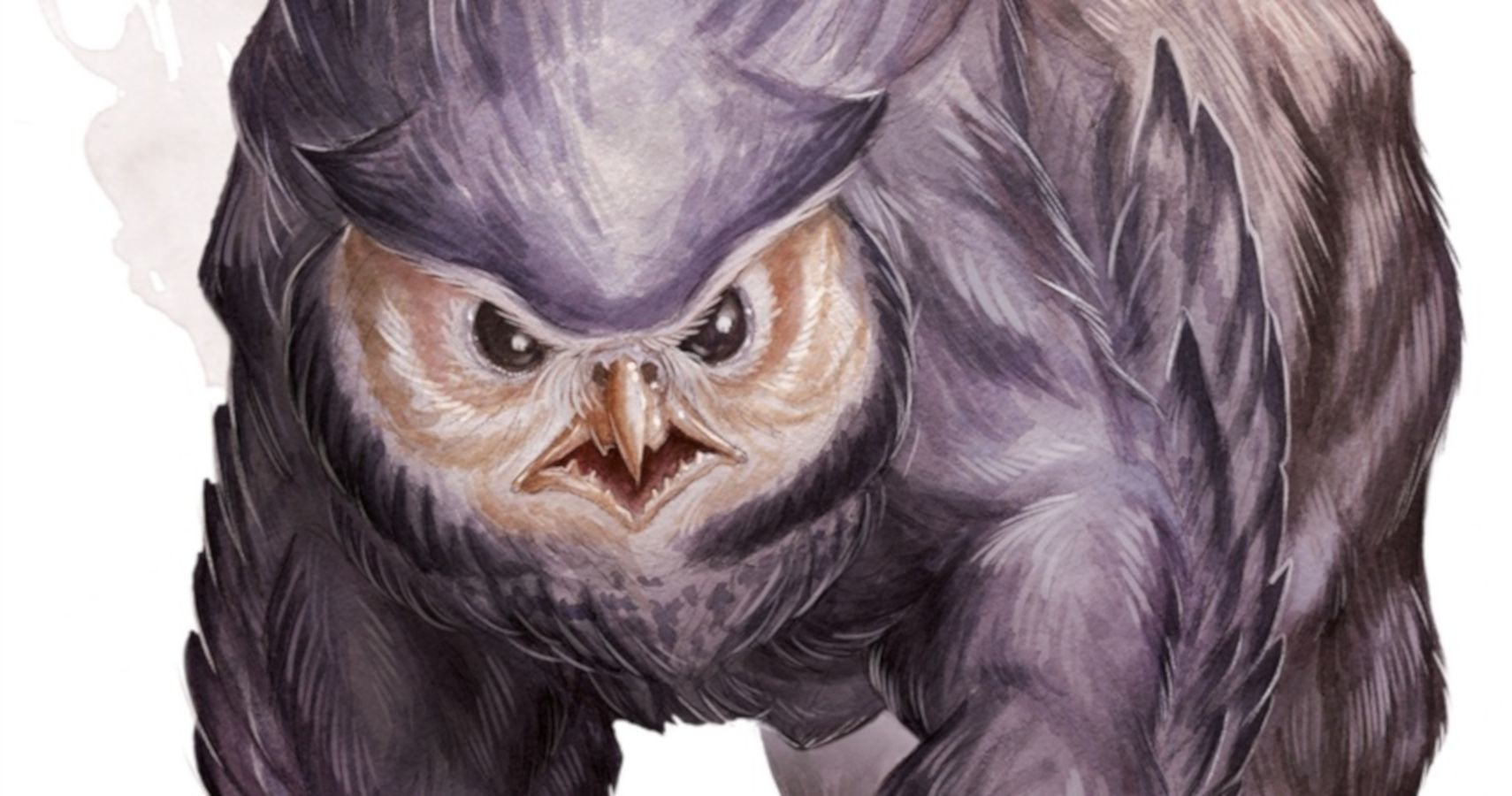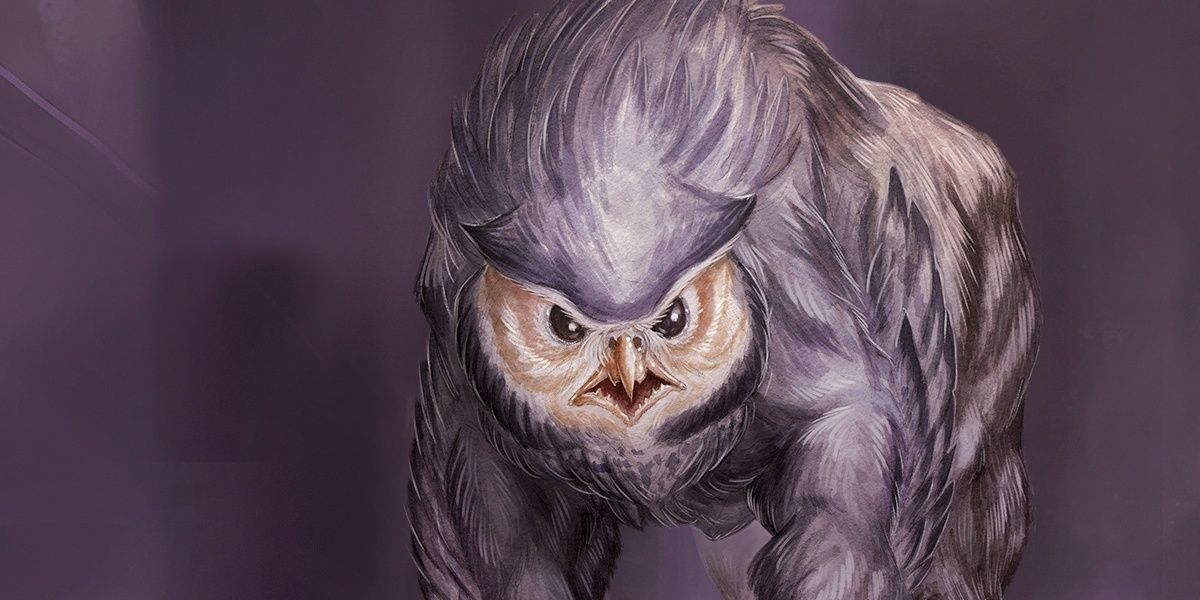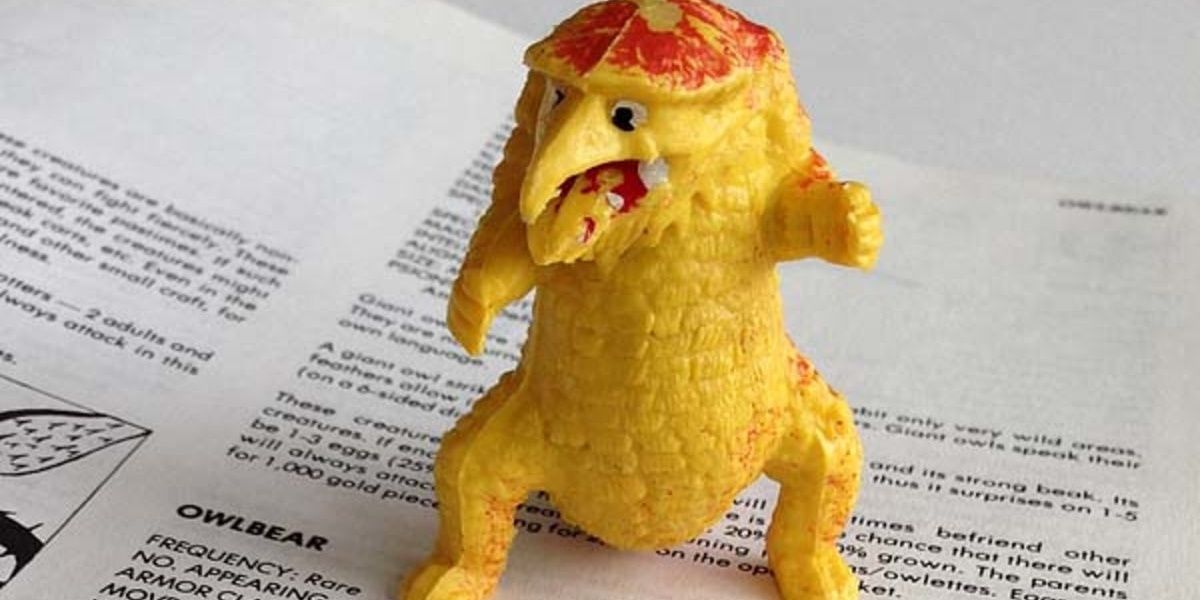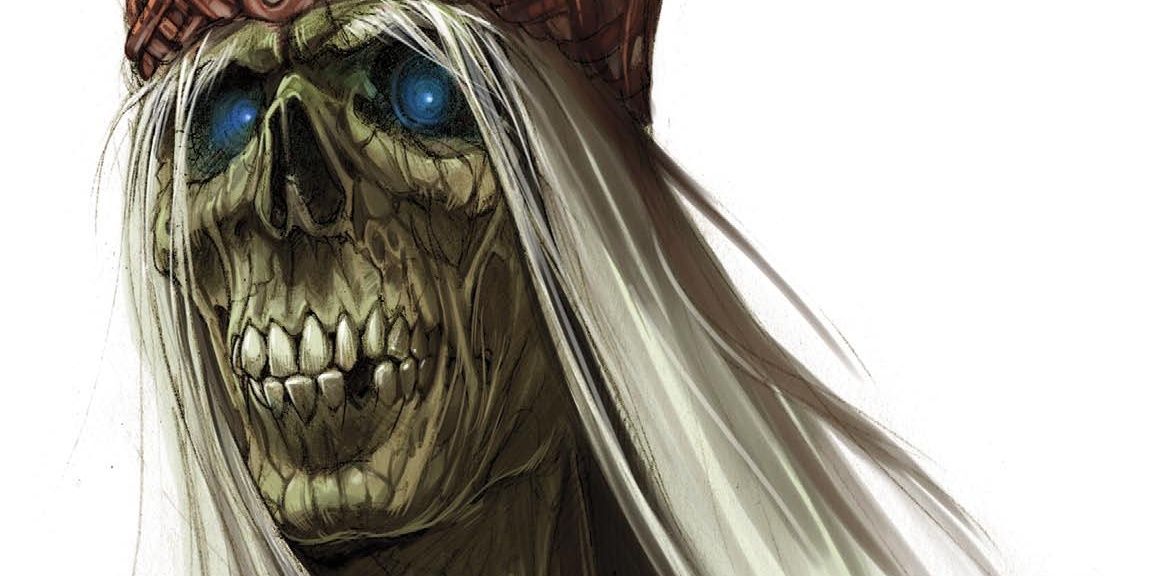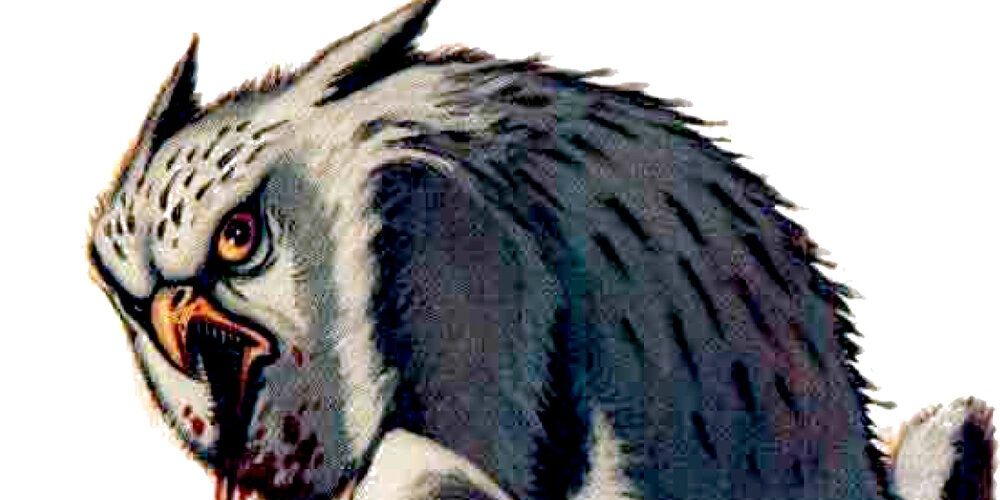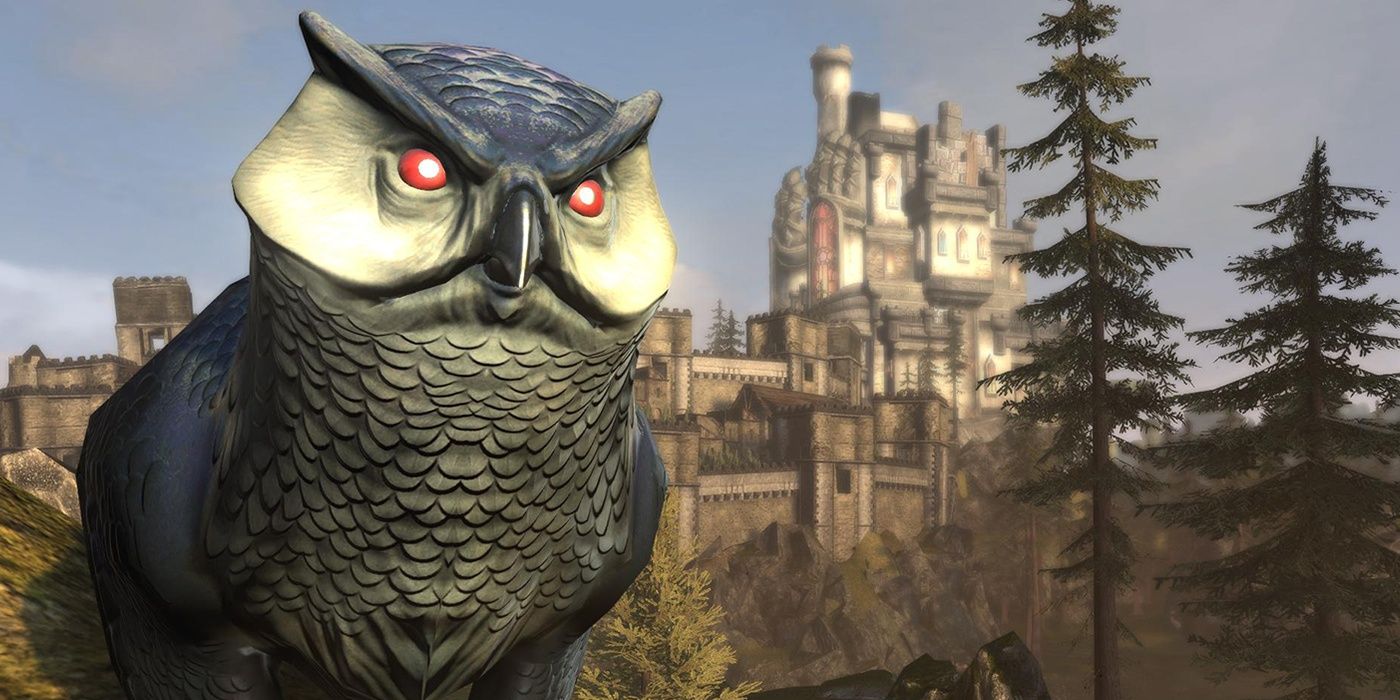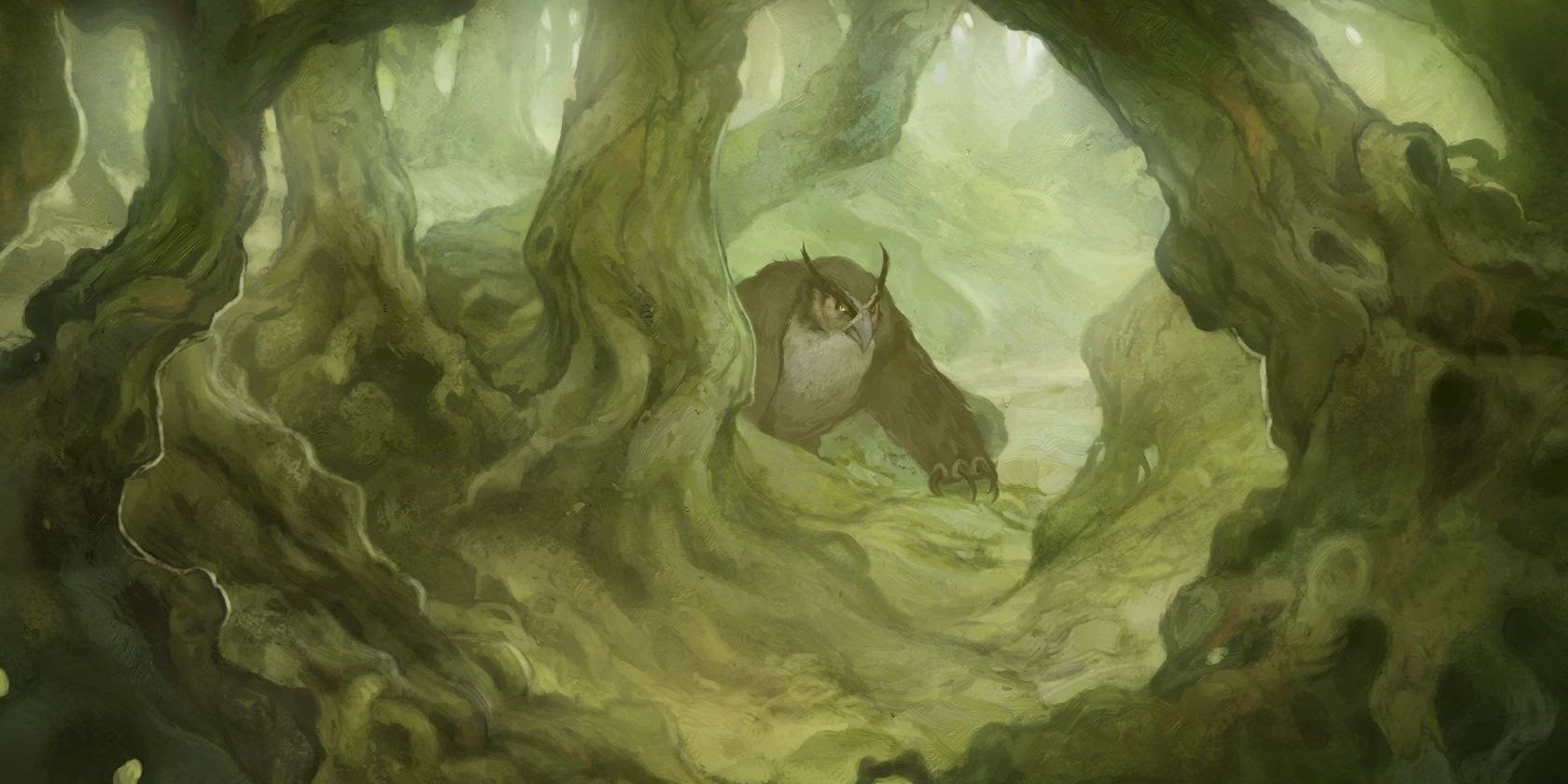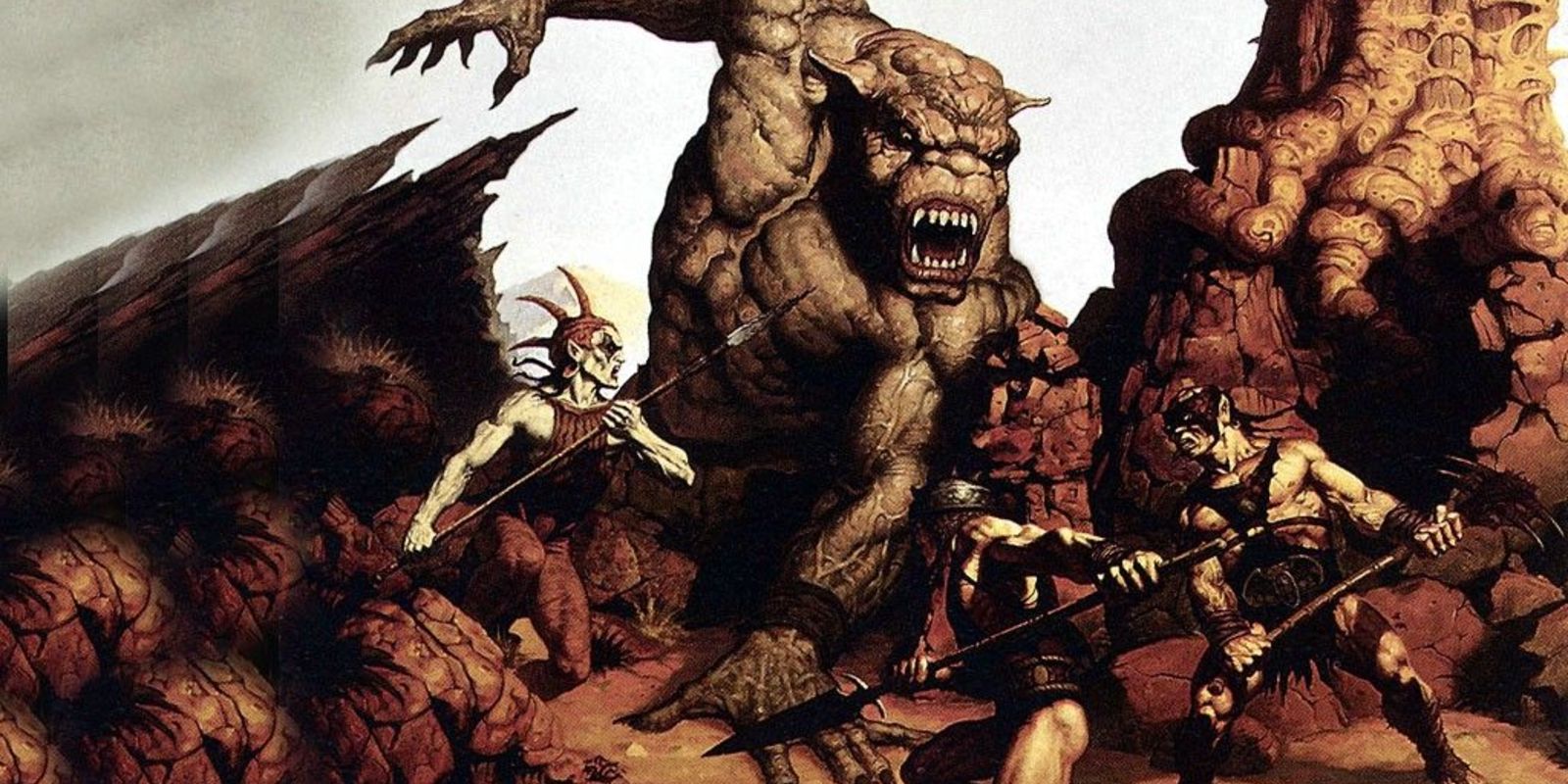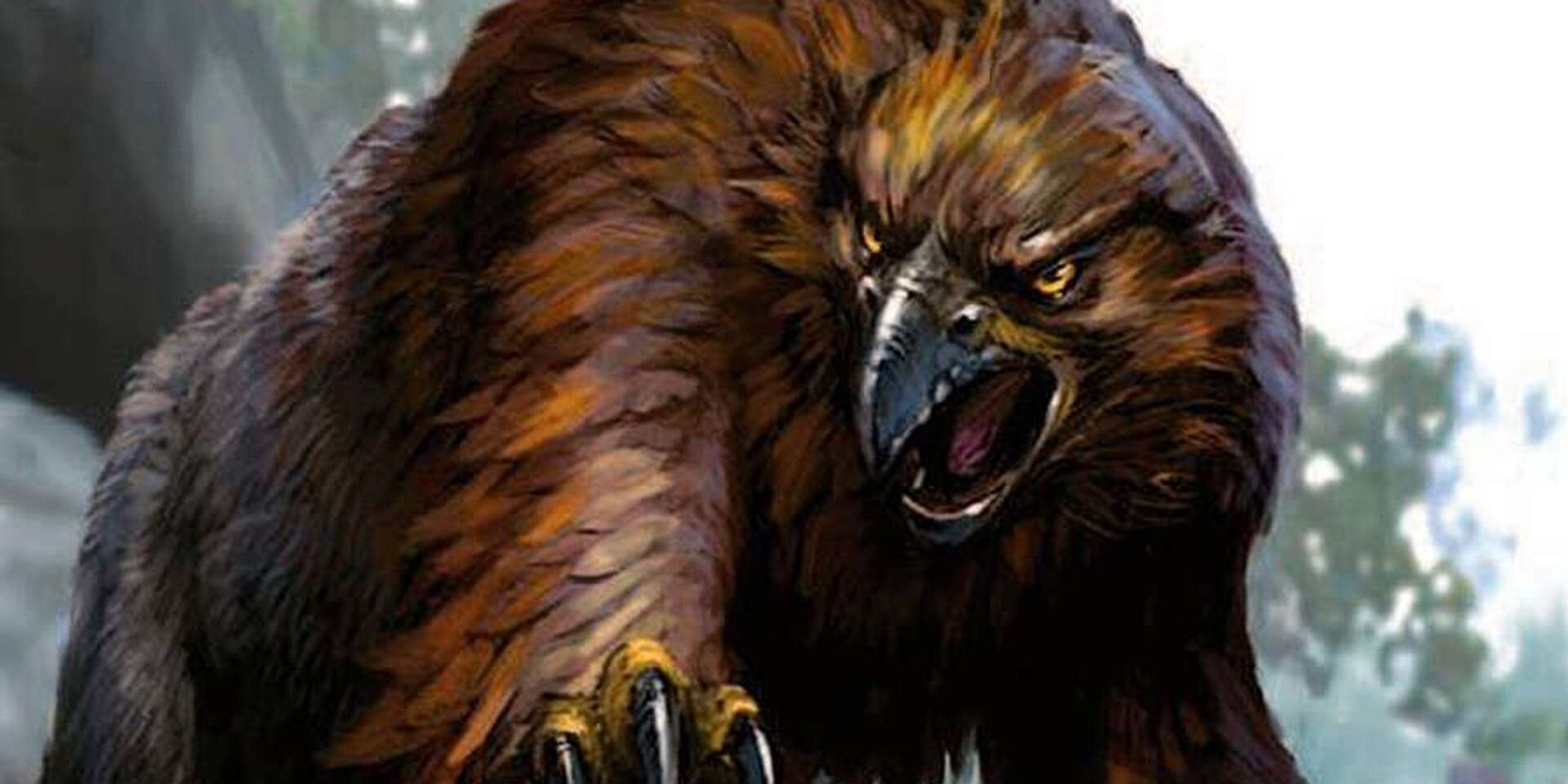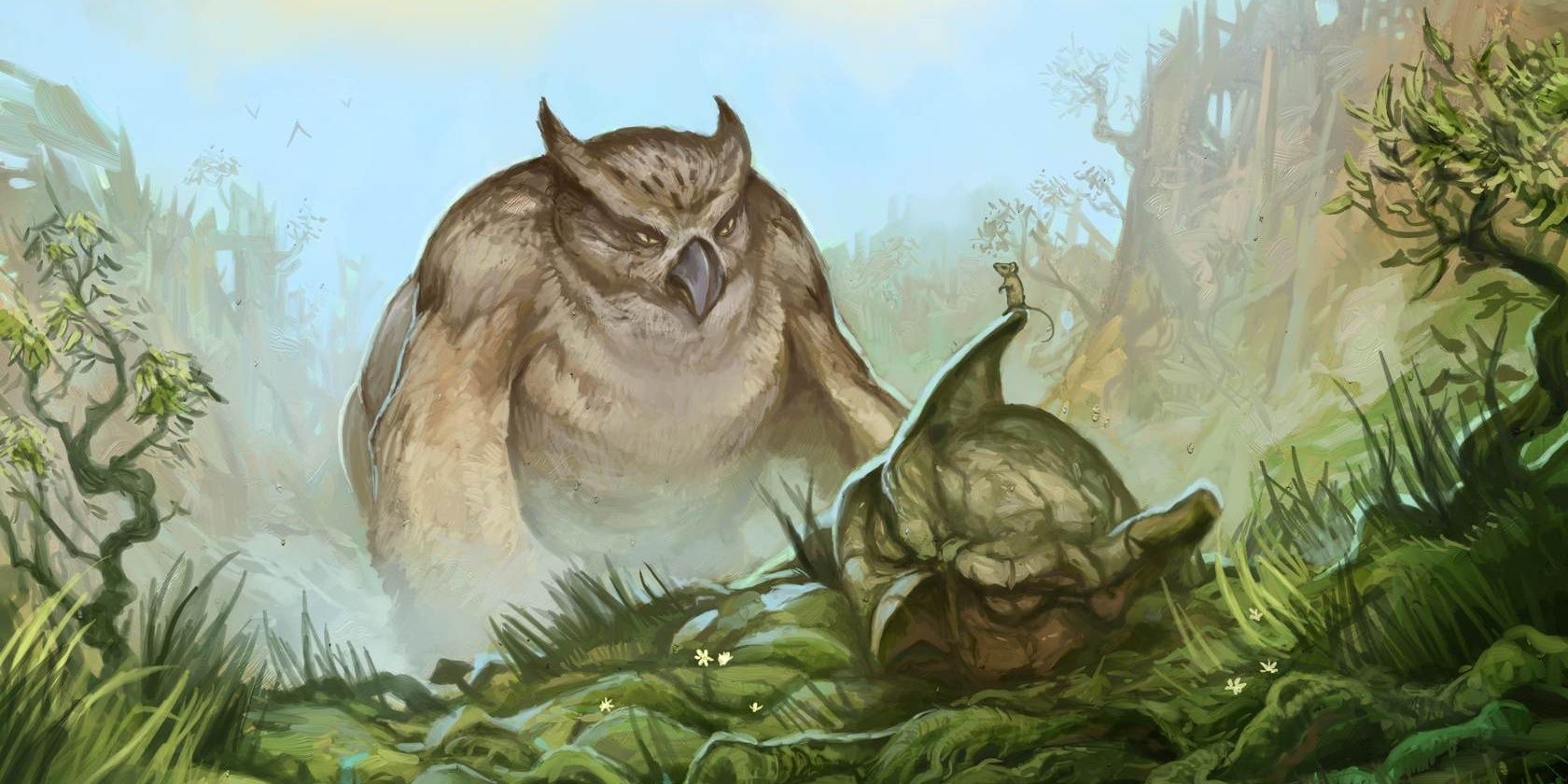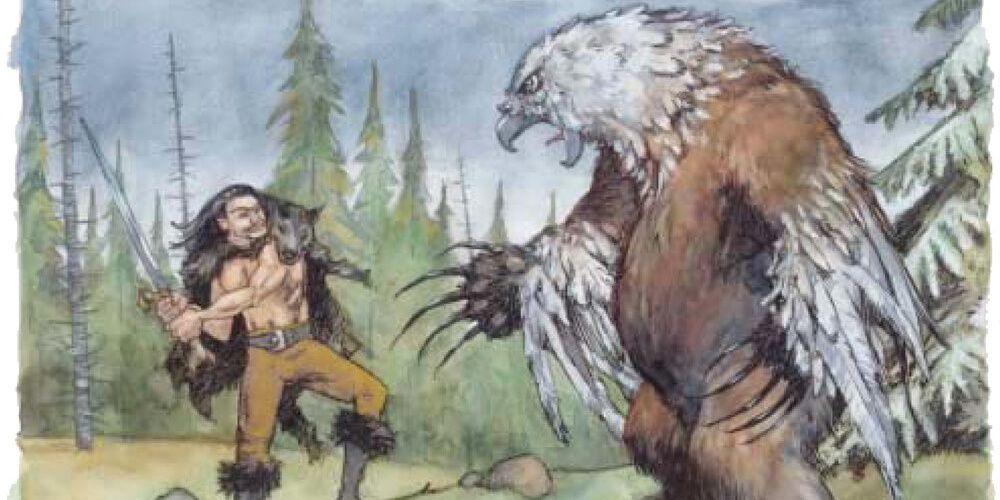One of the strangest creatures to originated from Dungeons & Dragons is the Owlbear. The Owlbear is a creature that appears to be a mixture of an owl and a bear. It tends to be found in forests and can be quite a threat to low-level adventurers. The Owlbear has been in every edition of D&D since the Original Edition's Greyhawk supplement in 1975.
The Owlbear has some really interesting lore that players of D & D do not talk about. This article will hope to change this by bringing up ten facts that the average D & D fan might not know about this wonderfully bizarre monster.
10 Farm Termites
Owlbears' similarities with their bear counterparts can be seen with their appetite for termites. Owlbears have displayed a rather interesting way to acquire these insects. In the forest of Cormanthor, the Owlbear developed a taste for termites due to them nearly wiping out every animal they usually eat like wolves and deers.
To prevent them from wiping out the termite, the Owlbear developed a method to control their population. That method being them controlling the termites wood supply by giving them more access to wood leading to a boom in the termite population, giving them more termites to eat.
9 Were Inspired By A Knock-Off Kaiju
Owlbears' origin is a rather interesting one. Gary Gygax looking for something to represent monsters for his prototype for D &D bought a pack of cheap plastic toys label as Dinosaurs. These toys did not look like Dinosaurs at all but were instead influenced by the Kaiju from the Godzilla and Ultraman franchise. One of these toys would serve as the design base for the Owlbear.
The Owlbear would not be the only monster inspired by this set of toys, as the Bulette and the Rust Monster were also inspired by toys in this pack. So for any Dungeon Monster looking to create odd and unique monsters might consider looking at the monster from this pack that wasn't used.
8 Have Unclear In-Universe Origins
While the Owlbear's real-world origin is well-established, their in-universe origins are a bit more uncleared. In the early editions of D & D, Owlbears were established to be escaped subject of experimentation by Wizards. The evil lich Thessalar even claimed to have been their true creator, but his egotistical personality makes him an unreliable source.
5th Edition has however created some doubt on this origin. The Monster Manual makes mention of that Elves claimed that Owlbears have existed for millennia and some of the Fey claimed that Owlbear has always existed in the Feywild.
7 Has Some Sub-Species
Like any popular D & D monster, the Owlbear has seen several sub-species. The first one introduced were from a Dragon, the core magazine about D & D from the 1980s to mid-2000s, in an article about the Owlbears and their ecology. The article introduced the Arctic Owlbear and Winged Owlbear.
These sub-species of Owlbears' have names that are very indicative of their nature. The Arctic Owlbear being adapted for arctic climates and the Winged Owlbear can fly. Over years a couple of new sub-species of Owlbear has been introduced like the Greater Owlbear and Ankholian Owlbear, which existed only in the Dragonlance setting.
6 Some People Race Them
Another interesting tidbit about Owlbears from the 5th Edtion Monster Manuel is that some people are foolhardy enough to try and race these vicious creatures. Some settlements in a remote part of Faerûn hold races where Owlbears are made to run around a track. This is a dangerous sport as these Owlbears are known to attack their tamer more often than trying to race.
Of course thanks to the existence of control monster spell and druid, the possibility existed of people racing on these Owlbears. This idea is a possibility thanks to the fact that the Neverwinter MMO has Owlbears as a possible player mount.
5 Have Some Weird Sub-Species In Pathfinder
While the sub-species of Owlbear in D & D are simple in concept, the ones in D & D's rival Pathfinder are weirder. There are Owlbears adapted to survive in underground caverns and a chaotic dimension. There are even some Owlbear sub-species created by the Orcs to serve as siege weapons called Siege Owlbear. Pathfinder even has a monster called the Bearowl.
The weirdest sub-species of Owlbear introduced in Pathfinder would have to the Slime Owlbear. The Slime Owlbear is an Owlbear specie that has formed a symbiotic relationship with Green Slime giving a sticky layer of defense.
4 Appear In The Dark Sun Setting
Despite commonly being found forests, the Owlbear has made one appearance in the arid Dark Sun setting. That was in the adventure The Black Spire. There were however not native to the setting, instead being a creature you can fight in the gladiatorial arena of the Giths from the Spelljammer setting.
That not to say that Owlbear wouldn't work in the Dark Sun setting as their origins of being the result of magical experimentation works well thematically with a world laid barren by magic. The only problem is finding a place for them to live.
3 Considered The Arctypcial Wandering Monster
The Owlbear was also created by Gary Gygax for a clear role in a D & D that of being the wandering monster. The Owlbear was stated and developed with the idea of it being a monster that the party randomly encounter while traveling or unleashed by the Dungeon Master to spice up a boring stretch of gameplay.
This can be seen in how the creature is stated to operate as a solitary creature that's a threat to a party of low-level adventurers. This makes quite the wandering monster, as its design to be dangerous but not requiring a complex strategy to beat.
2 Communicates In A Complicated Language of Screeches.
The Owlbears' termite hunting habit is not the only thing that shows its a highly intelligent monster. It can also communicate with other Owlbears through a complex language of screeching. So if your party is fighting an Owlbear and you hear a bunch of screeching, you should probably run.
This fact also ends the argument over if an Owlbear screeches like an owl or roar like a bear. The decision to make owlbear screech makes a lot of sense as the Owlbear's head tends to the part of it that looks the most like an Owl.
1 Inspire An Entire Style Of Fighting
The Owlbear's fury in combat has led to one tribe in the eastern region of Faerûn to adopt a fighting style inspired by the creature's brute strength. Particularly this style of fighting made them dangerous opponents in hand-to-hand combat.
A player can learn this style of fighting by learning the Owlbear Berserker fest, which allows play to add one six dice to the damage done by a successful grapple attack. This feat is, however, unavailable for 5th Edtion players as it only appears in the 3rd Edition sourcebook, The Unapproachable East.

